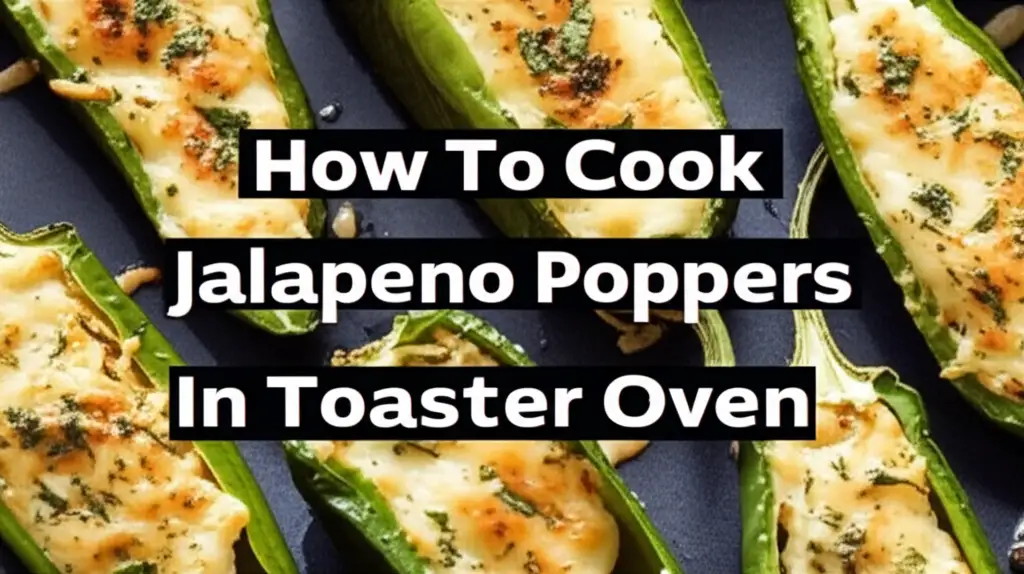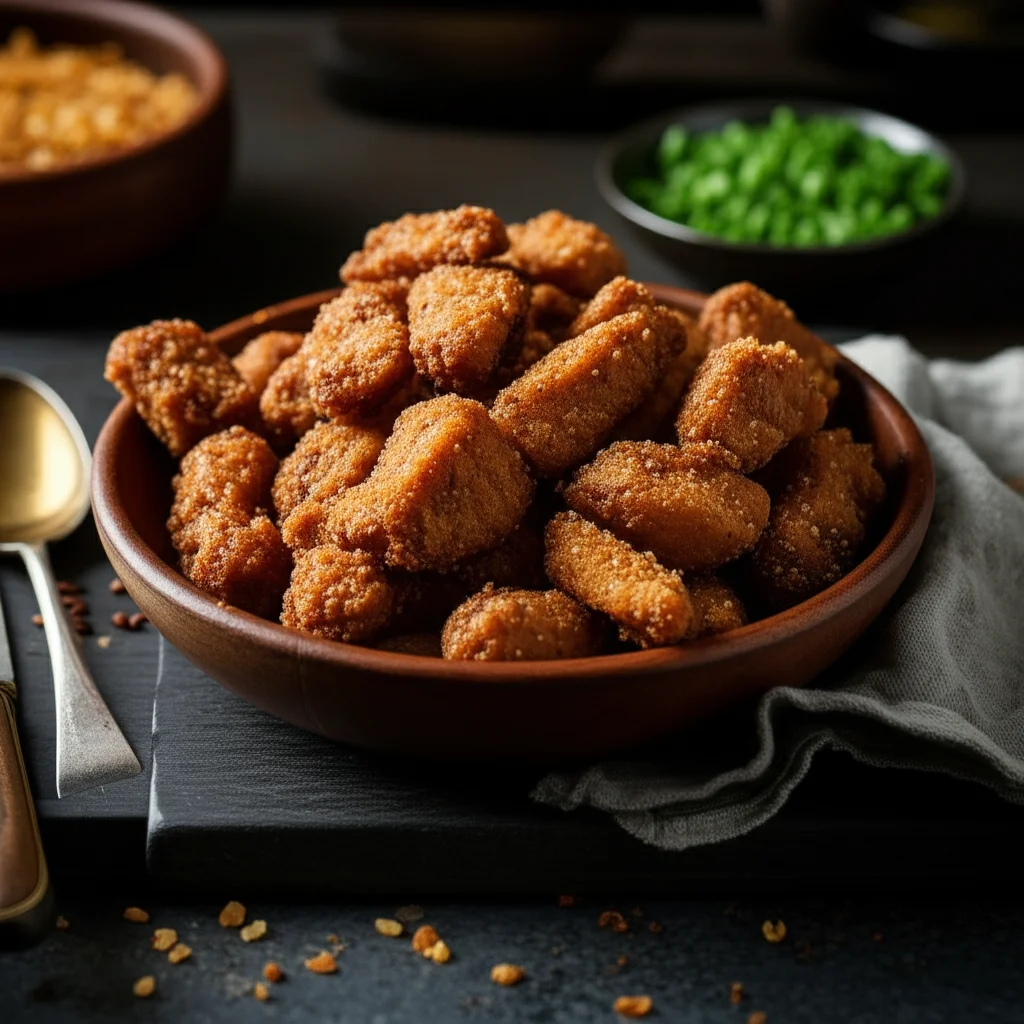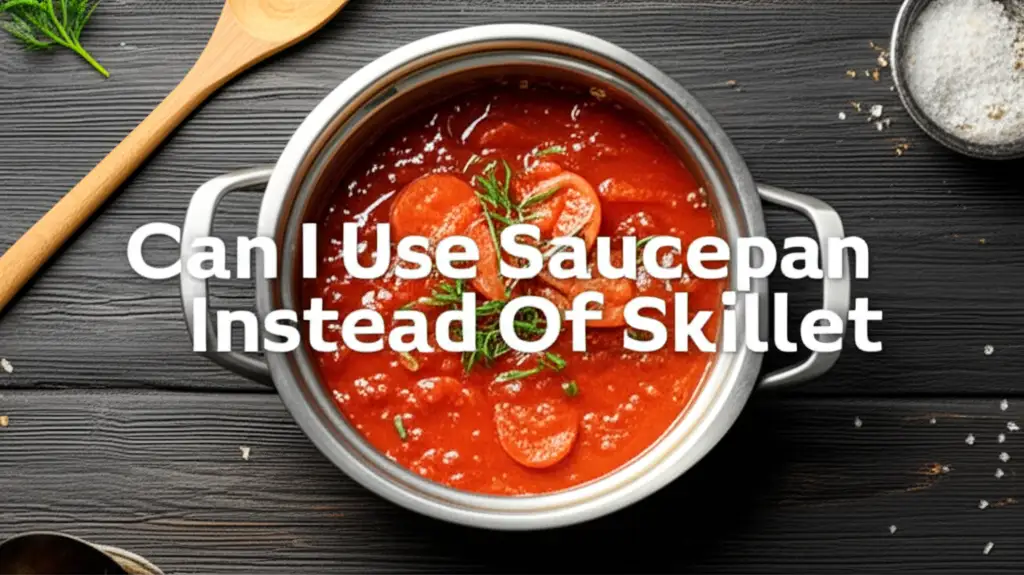· Todd Martin · Cooking Tips · 14 min read
How To Stovetop Asparagus

Unlock Perfect Stovetop Asparagus: A Simple Guide
Cooking fresh vegetables brings vibrant flavors to any meal. Among them, asparagus stands out for its unique taste and versatility. Many people wonder how to cook stovetop asparagus perfectly. It is a quick and simple process that delivers delicious results every time. This guide will show you everything you need to know about preparing this wonderful vegetable on your stovetop.
We will cover selecting the best asparagus and preparing it correctly. You will learn about various stovetop cooking methods. We also discuss how to achieve ideal texture and flavor. Finally, we will share tips for serving, storing, and creative variations. Get ready to enjoy perfectly cooked asparagus.
Takeaway
- Select firm, bright green asparagus with tight tips for freshness.
- Clean asparagus under cold water and snap off woody ends.
- Choose a cooking method: blanching for bright color, sautéing for flavor, or steaming for tenderness.
- Control heat and cooking time to achieve tender-crisp texture.
- Season simply with salt, pepper, and healthy fats.
How do you cook asparagus on the stovetop?
Cooking asparagus on the stovetop is simple. You first clean and trim the stalks. Then, choose your method: blanch, sauté, or steam. Blanching involves boiling briefly then chilling. Sautéing means cooking in a pan with a little fat. Steaming cooks asparagus over boiling water. Each method produces tender, delicious asparagus quickly.
Choosing and Preparing Fresh Asparagus
Starting with good ingredients makes a big difference. This is true for asparagus too. Selecting the freshest stalks ensures the best flavor and texture. Proper preparation also makes cooking easier and more effective.
Selecting Fresh Asparagus
When you shop for asparagus, look for specific signs of freshness. Fresh asparagus stalks are firm and stand upright. They do not bend easily. The color should be a vibrant green, not dull or yellowish.
Inspect the tips of the asparagus. They should be tightly closed and compact. Avoid asparagus with open, mushy, or flowering tips. These signs indicate older, less fresh asparagus. A good bunch of asparagus often has a slight, fresh scent.
Proper Asparagus Cleaning
Once you bring asparagus home, cleaning it properly is important. Asparagus often has dirt or sand hiding in its tips and scales. Rinse the stalks under cool running water. You can gently rub them to remove any visible grit.
Sometimes, I use a soft brush to clean the tips more thoroughly. This step ensures that your asparagus is ready for cooking. Clean asparagus tastes better and is safer to eat. For a deeper dive into vegetable cleaning, learn how to clean asparagus thoroughly.
Trimming Asparagus Ends
The bottom part of an asparagus stalk is woody and tough. You do not want to eat this part. There is a simple way to remove it. Hold an asparagus stalk in both hands. Bend it until it naturally snaps.
The stalk will break where the woody part meets the tender part. Discard the woody end. Repeat this process for all stalks. This method ensures you only cook the delicious, edible portion of the asparagus. You can also use a knife to cut off the bottom two inches.
Essential Stovetop Cooking Methods for Asparagus
The stovetop offers several great ways to cook asparagus. Each method brings out different qualities in the vegetable. You can choose based on your preference or the dish you are making. Let’s explore the most popular options.
Blanching Asparagus
Blanching is a quick cooking method. It keeps asparagus bright green and slightly crisp. You need a pot of boiling salted water and a bowl of ice water. First, bring a pot of water to a rolling boil. Add your cleaned and trimmed asparagus.
Cook for 2-4 minutes, depending on thickness. Thinner stalks cook faster. Asparagus should be bright green and tender-crisp. Immediately remove the asparagus with tongs or a slotted spoon. Transfer it into the ice water bath. This stops the cooking process and preserves the vibrant color.
Blanched asparagus is perfect for salads or as a chilled side dish. You can also blanch it as a first step before sautéing. This ensures even cooking. It also gives you more control over the final texture.
Sautéing Asparagus for Flavor
Sautéing is a popular method for cooking asparagus on the stovetop. It brings out a rich, savory flavor. You need a large skillet and a small amount of fat. Heat olive oil or butter in your skillet over medium-high heat. Add the trimmed asparagus in a single layer.
Do not overcrowd the pan. Cook for 5-7 minutes, tossing occasionally. The asparagus should become tender and slightly browned in spots. Season with salt and pepper while cooking. You can add minced garlic or lemon zest for extra flavor during the last minute of cooking. Sautéed asparagus makes a great warm side dish.
This method gives asparagus a lovely char. It also creates a deeper, more developed taste. The asparagus remains tender inside. The outside gets a nice bite.
Steaming Asparagus Gently
Steaming is a gentle cooking method. It preserves nutrients and a delicate texture. You need a pot with a steamer basket and a lid. Pour about an inch of water into the pot. Place the steamer basket inside, making sure the water does not touch the basket.
Bring the water to a boil. Add the asparagus to the steamer basket. Cover the pot tightly with the lid. Steam for 3-6 minutes, or until the asparagus is tender. The time depends on the thickness of the stalks.
Steamed asparagus is very tender. It has a mild flavor. It is ideal for those who prefer a softer texture. It pairs well with light sauces or a simple drizzle of olive oil. I find steaming perfect when I want the asparagus to be the star.
Mastering the Heat and Timing
Achieving perfectly cooked stovetop asparagus depends on heat control and timing. Asparagus cooks quickly. Overcooking it can lead to mushy results. Undercooking leaves it tough. We want tender-crisp.
Achieving Tender-Crisp Perfection
The term “tender-crisp” describes the ideal texture for asparagus. It means the stalks are tender enough to bite through easily. However, they still retain a slight snap. They are not soft or limp. This texture is achieved by careful monitoring.
For most stovetop methods, medium to medium-high heat works well. If the heat is too low, the asparagus will steam rather than brown. If it is too high, it might burn before cooking through. I often test a piece before removing the entire batch. This ensures the best texture. Remember, different methods require different heat levels.
Adjusting for Asparagus Thickness
Asparagus stalks come in various thicknesses. Thin asparagus cooks much faster than thick asparagus. You must adjust your cooking time accordingly. Thin stalks might only need 2-3 minutes for sautéing. Thick spears could take 7-10 minutes.
When buying asparagus, try to pick stalks of similar thickness. This ensures even cooking. If you have a mix, you can separate them. Cook the thicker pieces first for a minute or two. Then add the thinner ones. This technique helps everything finish cooking at the same time.
Common Stovetop Asparagus Mistakes
Mistakes happen, but you can learn from them. One common error is overcrowding the pan during sautéing. This lowers the pan’s temperature. It causes the asparagus to steam instead of sauté. The result is limp, pale asparagus. Cook in batches if your pan is too small.
Another mistake is overcooking. Asparagus goes from crisp to mushy very quickly. Pay close attention during the last few minutes of cooking. Remove it from the heat as soon as it reaches tender-crisp. Also, forgetting to season can make asparagus bland. Always add salt and pepper.
Flavor Enhancements for Stovetop Asparagus
Asparagus tastes great on its own. However, adding simple seasonings and aromatics can elevate its flavor. These additions turn a simple side dish into something special. You can easily customize the taste profile.
Simple Seasoning Ideas
Basic seasoning for asparagus includes salt and freshly ground black pepper. These simple additions bring out its natural taste. I always add them during cooking or right after. A drizzle of good quality olive oil or a knob of butter also adds richness.
For a touch of brightness, a squeeze of fresh lemon juice is wonderful. This works well with all cooking methods. A pinch of red pepper flakes adds a subtle warmth. Garlic powder or onion powder can also boost the savory notes. Keep it simple to let the asparagus shine.
Adding Aromatics
Incorporating aromatics enhances the flavor deeply. Minced garlic is a classic pairing with asparagus. Add it to the pan during the last minute or two of sautéing. This prevents the garlic from burning. Its fragrant aroma infuses the asparagus.
Thinly sliced shallots or a sprinkle of fresh herbs also work well. Dill, parsley, or chives are excellent choices. Add them just before serving. Their fresh notes complement the cooked asparagus. These small additions create a more complex flavor.
Finishing Touches and Garnishes
Presentation matters. Finishing touches make your stovetop asparagus look and taste even better. A sprinkle of Parmesan cheese adds a salty, nutty flavor. Toasted slivered almonds or pine nuts provide a lovely crunch.
A drizzle of balsamic glaze offers a sweet and tangy contrast. You can also add a pat of compound butter (butter mixed with herbs or garlic). This melts over the hot asparagus. These garnishes are easy to add. They transform a simple dish into a gourmet experience.
Tips for Serving and Storing Stovetop Asparagus
Once your stovetop asparagus is perfectly cooked, serving it well makes a difference. Knowing how to store leftovers is also important. This prevents waste and keeps your food fresh for later enjoyment.
Best Pairings for Asparagus
Asparagus is a versatile vegetable. It pairs well with many main dishes. It is excellent with roasted chicken or baked fish. The fresh, green flavor complements these proteins nicely. Asparagus also works well with beef or lamb.
It is a great addition to pasta dishes or risottos. I often serve it alongside scrambled eggs for a healthy breakfast. For a light meal, it can be the star of a simple spring salad. Its vibrant color and distinct flavor make it a welcome addition to almost any plate. Think about how its slight bitterness balances richer foods.
Reheating Cooked Asparagus
Reheating asparagus can be tricky. You want to avoid making it mushy. The best way to reheat stovetop asparagus is gently. You can place it in a dry skillet over medium-low heat. Toss it until it is just warmed through, about 2-3 minutes. Avoid adding too much oil.
Another option is to reheat it briefly in the microwave. Use short bursts of 30 seconds at a time. This method works well for small portions. Overheating will turn it soft and lose its crispness. Plan to enjoy it fresh for the best texture.
Storing Leftover Asparagus
If you have leftover cooked asparagus, store it properly. Let it cool completely first. Then, place it in an airtight container. Store it in the refrigerator. Cooked asparagus will stay fresh for 3-4 days.
It is best to consume it within this timeframe. After cooking, maintaining a clean kitchen workspace is important. Just like you might need to clean large rubber-backed rugs in high-traffic areas, keeping your cooking surfaces spotless ensures hygiene. Cooked asparagus can sometimes develop a stronger smell over time. This is normal.
Beyond Basic Stovetop Asparagus: Creative Variations
Once you master basic stovetop asparagus, you can try creative variations. These ideas add new dimensions of flavor. They make asparagus exciting every time you cook it. Experiment with different ingredients to find your favorites.
Asparagus with Lemon and Garlic
This is a classic and very popular flavor combination. It brings brightness and a pungent kick to the dish. To prepare, sauté your asparagus as usual. During the last minute of cooking, add 2-3 cloves of minced garlic. Toss until fragrant.
Remove from heat. Squeeze fresh lemon juice over the asparagus. You can also add some lemon zest for an even stronger citrus note. This variation is incredibly fresh-tasting. It is perfect for spring meals. I often use this simple yet powerful duo.
Spicy Stovetop Asparagus
If you enjoy a bit of heat, make your asparagus spicy. This variation adds a pleasant warmth to the dish. While sautéing asparagus, add a pinch or two of red pepper flakes. Adjust the amount based on your spice preference.
You can also add a dash of your favorite hot sauce after cooking. A tiny drizzle of chili oil at the end also works. The heat contrasts well with the mildness of the asparagus. It creates an exciting flavor profile. This is a great way to wake up your taste buds.
Asparagus with Parmesan
Parmesan cheese adds a salty, savory, and slightly nutty flavor. It melts beautifully over hot asparagus. This makes it a decadent yet simple side. After cooking your asparagus using any stovetop method, transfer it to a serving dish.
While it is still hot, sprinkle a generous amount of freshly grated Parmesan cheese over it. The residual heat will slightly melt the cheese. You can also add a tiny drizzle of olive oil before the cheese. This variation is a crowd-plepleaser. It adds a delightful richness to the vegetable.
Asparagus with Balsamic Glaze
Balsamic glaze offers a sweet and tangy finish. It creates a gourmet touch with minimal effort. You can buy pre-made balsamic glaze. Or, you can reduce balsamic vinegar yourself. To make it, simmer balsamic vinegar in a small pot until it thickens.
After cooking your asparagus, drizzle the balsamic glaze over the stalks. The dark, glossy glaze looks impressive. Its sweet tanginess complements the earthy asparagus flavor. This variation is elegant enough for special occasions. It is still simple enough for weeknight dinners.
FAQ Section
How long does it take to cook asparagus on the stovetop?
Cooking time for stovetop asparagus varies by method and thickness. Blanching takes 2-4 minutes. Sautéing typically requires 5-7 minutes. Steaming can take 3-6 minutes. Thinner stalks cook faster. Always aim for tender-crisp. You can test a piece to check for doneness.
Should I boil or steam asparagus?
Both boiling (blanching) and steaming are good methods. Blanching provides a bright color and quick cooking, then stops with an ice bath. Steaming preserves nutrients and gives a very tender texture. Choose based on desired texture. Steaming is often considered healthier for nutrient retention.
Can I cook frozen asparagus on the stovetop?
Yes, you can cook frozen asparagus on the stovetop. Do not thaw it first. Add frozen asparagus directly to boiling water for blanching. Or, sauté it from frozen, adding a few extra minutes to the cooking time. It might release more water. The texture may be softer than fresh asparagus.
What is the best way to clean asparagus before cooking?
The best way to clean asparagus is to rinse it thoroughly under cold running water. Gently rub the stalks to remove any dirt or sand. Pay attention to the tips where grit can hide. Some people soak it briefly. This ensures it is free from debris.
How do I store fresh asparagus before cooking?
Store fresh asparagus like a bouquet of flowers. Trim the very ends of the stalks. Place them upright in a glass jar with about an inch of water. Cover the tips loosely with a plastic bag. Keep it in the refrigerator. It stays fresh for up to a week this way.
What pan is best for sautéing asparagus?
A large skillet or frying pan is best for sautéing asparagus. Choose a pan with a wide surface area. This allows the asparagus to lie in a single layer. It prevents overcrowding. This ensures the asparagus cooks evenly and gets a nice sear. Cast iron or stainless steel pans work well. Keeping your stovetop clean, especially if it’s ceramic, is also important for good cooking results. You can find tips on how to clean ceramic stovetop to maintain your cooking surface.
Conclusion
Cooking stovetop asparagus is a simple and rewarding skill. We explored how to select the freshest stalks. You learned to clean and trim them for optimal results. We covered popular stovetop methods: blanching, sautéing, and steaming. Each method offers unique benefits, allowing you to achieve the perfect texture.
We discussed controlling heat and timing for that tender-crisp bite. You also discovered easy ways to enhance flavor with seasonings and aromatics. Remember, simple additions like lemon and garlic can make a big difference. With these tips, you can enjoy delicious, perfectly cooked stovetop asparagus. Start experimenting tonight and bring this healthy, flavorful vegetable to your table often. It is truly a versatile vegetable that elevates any meal.





